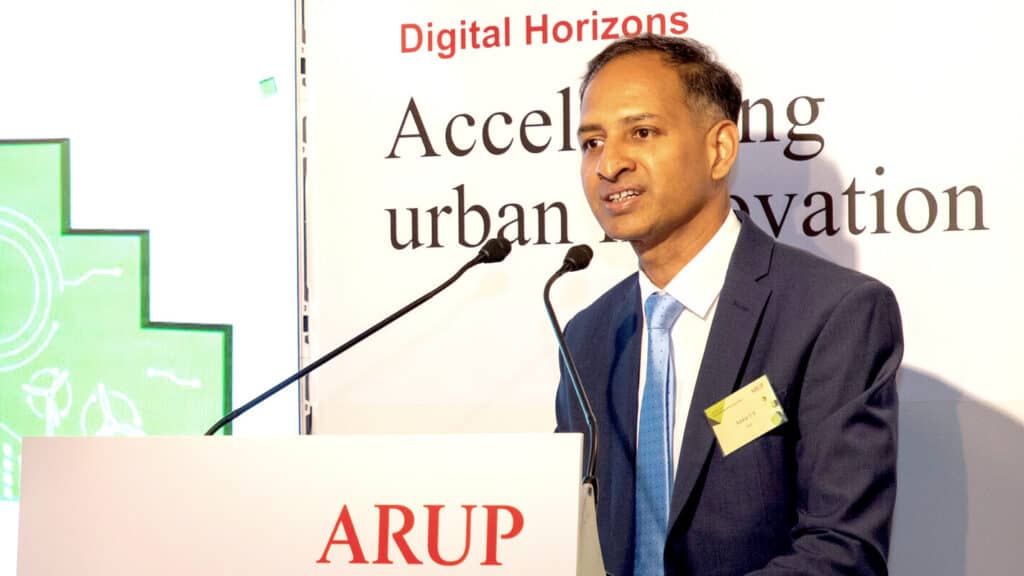As the construction and civil engineering sector in China and Hong Kong undergoes rapid digitalisation, industry leaders are harnessing advanced technologies to enhance efficiency and collaboration. This transformation is crucial for addressing pressing challenges such as labour shortages and sustainability.
Current landscape of the construction industry
In mainland China, the construction industry has witnessed remarkable growth over the past three decades. However, as Sankar S. Villupuram, director and East Asia Digital Services Leader at Arup, recalls, "During the pandemic, countries increased infrastructure investments; however, most of the major markets have not yet recovered after COVID."
This situation has resulted in a surplus of residential properties, yet fewer investors, leading to a significant shift within the industry. The repercussions of these changes are felt across various stakeholders, including consultants, contractors, and civil engineers.
In Hong Kong, recent reports indicate that while there was a surge in construction activity during the pandemic, many sectors are still grappling with its aftershocks. The Hong Kong Construction Industry Council has underscored the ongoing need for infrastructure investment, emphasising that recovery remains challenging for many firms.
The digital shift in construction
Historically, the construction industry in Asia has been slow to adopt new technologies. However, recent trends indicate a significant shift towards digital solutions. According to a report by McKinsey & Company, the construction sector in Asia is projected to grow by 6% annually over the next five years, largely driven by digital innovation.
Villupuram emphasises that “the integration of digital tools is not just about keeping up with global trends; it’s about survival in an increasingly competitive market.”
Data standardisation and productivity
As the industry adapts to these changes, effective data management becomes paramount.

"Mature organisations leverage data analytics to discover answers through a process-driven approach, while emerging companies often seek answers before conducting analytics." Sankar S. Villupuram
This highlights a critical challenge: the need to make sense of the vast amounts of data available.
A successful data standardisation process involves transforming raw data into actionable insights. Villupuram cites the example of Hong Kong Airport, which aspires to become a data-driven entity.
"The key is transforming data into actionable insights through comprehensive analysis," he emphasises. This focus on data-driven decision-making is essential for organisations aiming to enhance productivity and collaboration across departments.
Addressing labour shortages
One of the most pressing challenges facing the construction industry is a shortage of skilled labour. Villupuram points out that the traditional workforce model is no longer sustainable. As populations age and younger generations seek different career paths, the industry must adapt. Digitalisation offers a solution by automating repetitive tasks and enhancing productivity.
Villupuram highlights the shift in education towards interdisciplinary programmes that combine practical skills with technical knowledge. "Skill development is crucial," he states, pointing to initiatives like the Vocational Training Council (VTC) in Hong Kong, which prepares individuals for industry demands.
For instance, Building Information Modelling (BIM) has become a cornerstone of modern construction practices, allowing for better project visualisation, improved collaboration among stakeholders, and more efficient resource management. Villupuram noted, “BIM not only streamlines processes but also reduces errors and rework, which are costly in both time and resources.”
Sustainability through technology
Sustainability is another critical concern for the construction sector. The increasing urgency to address climate change has prompted many companies to rethink their approaches to building design and construction methods.

“Sustainable practices are no longer optional; they are essential for the future of our cities.” Sankar S. Villupuram
Innovations such as modular construction and 3D printing are gaining traction, as they reduce waste and lower carbon footprints. Additionally, data analytics plays a vital role in optimising energy use throughout a building’s lifecycle. By leveraging these technologies, companies can create structures that are not only environmentally friendly but also economically viable.
The role of collaboration
Collaboration is key to successful project delivery in the construction industry. Villupuram emphasises the importance of breaking down silos between different stakeholders—architects, engineers, contractors, and clients. “Digital platforms facilitate real-time communication and collaboration,” he explains. This interconnectedness leads to better decision-making and more cohesive project outcomes.
Arup has been at the forefront of developing collaborative tools that integrate various aspects of project management. These tools enable teams to share information seamlessly, track progress, and address issues promptly. Villupuram remarks that when everyone is on the same page, projects run more smoothly, leading to increased client satisfaction.
Innovations driving change
Several recent innovations are making waves in the Asian construction landscape:
- Artificial Intelligence (AI): AI is transforming how projects are planned and executed. From predictive analytics that forecast project risks to AI-driven design tools that optimise building layouts, the potential applications are vast. Villupuram opines, “AI can analyse vast amounts of data quickly, providing insights that humans might overlook.”
- Drones and Robotics: Drones are being employed for site surveys and inspections, significantly reducing the time required for these tasks while enhancing safety. Robotics is also making its mark, with automated machinery taking on dangerous or monotonous tasks on-site. Villupuram believes these technologies not only improve efficiency but also protect workers from hazardous conditions.
- Virtual Reality (VR) and Augmented Reality (AR): VR and AR technologies are revolutionising how stakeholders interact with projects before they break ground. These immersive tools allow clients to experience designs in a virtual space, providing valuable feedback early in the process. “This level of engagement helps align expectations and reduces costly changes later on,” Villupuram explains.
The future of construction
Looking ahead, digital transformation will continue to shape the construction landscape in Asia. Optimistic about the future, Villupuram remarks, “The potential for innovation is limitless. As we embrace new technologies, we will not only enhance our efficiency but also create more sustainable and resilient built environments.”
The construction industry must remain agile and open to change if it hopes to thrive amid evolving challenges. By harnessing advanced technologies and fostering collaboration among stakeholders, companies can position themselves at the forefront of this transformation.
For Villupuram, digitalisation is not just a trend; it’s a fundamental shift that will define the future of the construction industry. As the industry navigates this new landscape, embracing innovation and adaptability will be essential for achieving long-term success and addressing the pressing challenges of the future.


